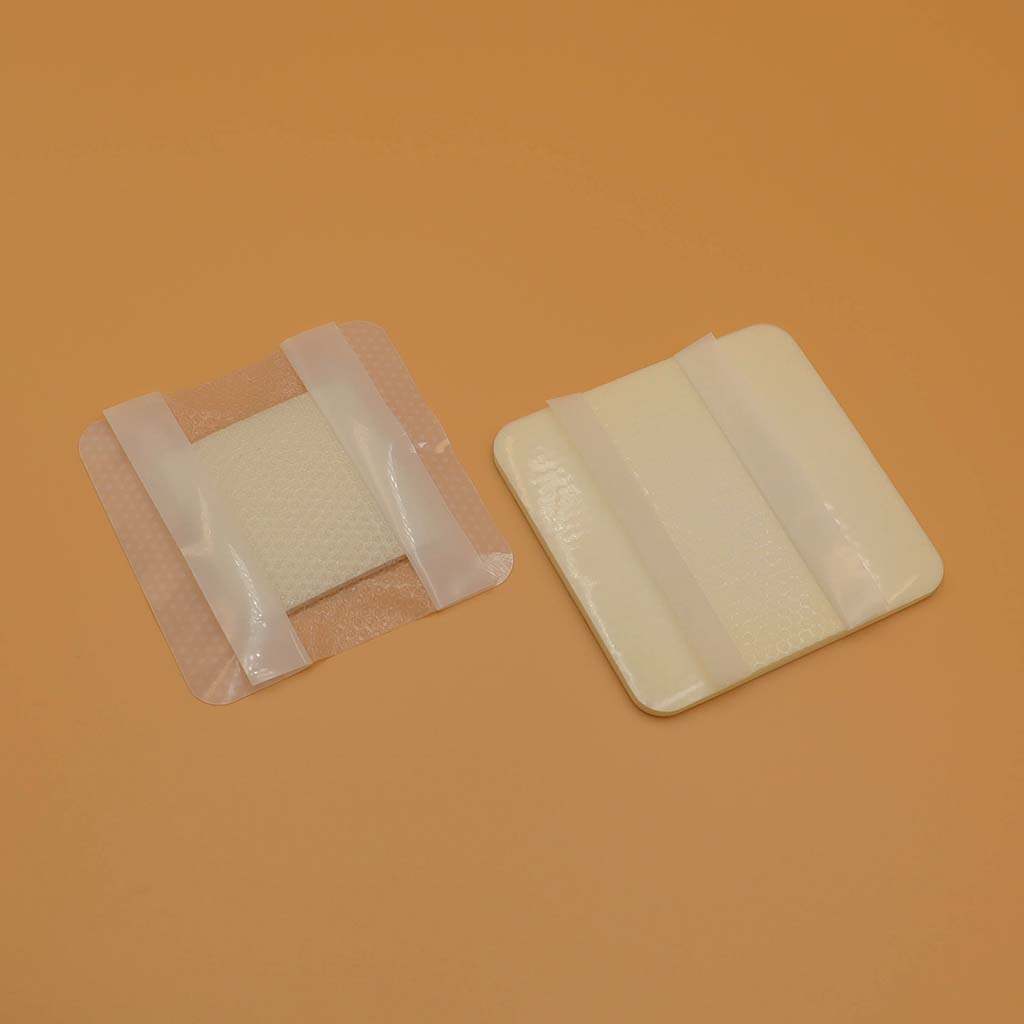Email cannot be empty
Password cannot be empty
Email format error
Email cannot be empty
Email already exists
6-20 characters(letters plus numbers only)
The password is inconsistent
Email format error
Email cannot be empty
Email does not exist
6-20 characters(letters plus numbers only)
The password is inconsistent


The Essentials of Wound Care: Understanding Foam Dressings
When it comes to managing wounds, whether they’re minor cuts, burns, or more significant injuries, the right treatment can make a significant difference in healing. Among the various options available, wound care foam dressings have gained popularity for their versatility and effectiveness. In this blog, we’ll explore what foam dressings are, their benefits, and how to choose the right type for your needs.
What Are Wound Care Foam Dressings?
Foam dressings are advanced wound care products designed to absorb exudate (fluid) from wounds while providing a moist healing environment. They are made from a soft, flexible material that can easily conform to the shape of the wound, making them comfortable to wear. Foam dressings come in various thicknesses and sizes, catering to different types of wounds—from superficial abrasions to deep ulcers.
The Structure of Foam Dressings
These dressings are typically made of polyurethane foam, which has a unique structure that allows it to absorb and retain fluid while keeping the wound moist. This moisture balance is crucial for wound healing, as it promotes cell migration and reduces pain. The outer layer of the dressing is often water-resistant, providing a barrier against external contaminants, while the inner layer is designed to facilitate fluid absorption.
The Benefits of Foam Dressings
1. Moisture Management
One of the most significant advantages of wound care foam dressings is their ability to maintain a moist environment. This is essential for promoting healing and reducing the risk of infection. A moist wound environment accelerates the healing process by encouraging the growth of new cells and minimizing tissue damage.
2. Absorbency
Foam dressings are highly absorbent, making them suitable for wounds that produce moderate to heavy exudate. The ability to absorb excess fluid helps prevent maceration (softening of the skin due to prolonged moisture), which can hinder healing and increase the risk of infection.
3. Comfort and Flexibility
The soft and flexible nature of foam dressings makes them comfortable to wear. They can conform to the contours of the body, allowing for freedom of movement. This is particularly beneficial for wounds located on areas of the body that experience frequent motion, such as joints.
4. Reduced Pain
Foam dressings can also help reduce pain associated with wound healing. By maintaining a moist environment and providing cushioning, they minimize friction and irritation during movement, which can lead to a more comfortable healing experience.
5. Easy Application and Removal
Most foam dressings are designed for easy application and removal. They typically come with a self-adhesive backing that sticks to the surrounding skin, allowing for secure placement without the need for additional tape or fixation devices. When it’s time to change the dressing, they can usually be removed gently, reducing discomfort.
Choosing the Right Foam Dressing
When selecting a foam dressing, several factors should be considered to ensure you choose the most appropriate product for your wound type and healing goals.
1. Wound Type and Location
Different wounds have different needs. For instance, a pressure ulcer may require a thicker dressing with higher absorbency, while a minor cut may only need a lightweight option. Additionally, the location of the wound is essential. Areas prone to movement may benefit from a more flexible dressing that can withstand the stress of daily activities.
2. Absorbency Level
Consider the amount of exudate your wound produces. Foam dressings come in various absorbency levels, so it’s crucial to choose one that matches the wound’s drainage. A dressing that is too absorbent may dry out, while one that isn’t absorbent enough may lead to leakage and increased risk of infection.
3. Wear Time
Some foam dressings are designed for extended wear, allowing them to stay in place for several days. Others may need to be changed more frequently. Consider your lifestyle and how often you’ll be able to change the dressing when making your selection.
4. Skin Sensitivity
If you have sensitive skin or a history of allergic reactions, it’s essential to choose a foam dressing that is gentle on the skin. Look for hypoallergenic options that minimize the risk of irritation.
5. Cost and Accessibility
Finally, consider the cost and availability of the foam dressing. While some high-quality options may be more expensive, they may provide better outcomes in terms of healing and comfort. Check with your healthcare provider or local pharmacy for recommendations and availability.

How to Apply and Change Foam Dressings
Proper application and changing of foam dressings are crucial for effective wound care. Here’s a simple guide to help you:
Step 1: Prepare the Wound
Before applying a new dressing, make sure to clean the wound thoroughly. Use a mild saline solution or wound cleanser to remove any debris or old dressing residue. Gently pat the area dry with a sterile gauze pad.
Step 2: Choose the Right Size Dressing
Select a foam dressing that adequately covers the wound, extending at least one inch beyond the edges to ensure a good seal.
Step 3: Apply the Dressing
Peel off the backing of the foam dressing and carefully place it over the wound. Press down gently around the edges to ensure it adheres to the surrounding skin. Avoid touching the surface of the dressing to maintain its sterility.
Step 4: Secure the Dressing
If needed, secure the dressing with additional tape or a bandage to prevent it from shifting, especially in high-movement areas.
Step 5: Change the Dressing
Follow your healthcare provider’s instructions for how often to change the dressing. When changing, repeat the cleaning process, and always inspect the wound for any signs of infection, such as increased redness, swelling, or discharge.
Common Misconceptions About Foam Dressings
Despite their popularity, there are some common misconceptions about wound care foam dressings that can lead to misunderstandings about their use.
Misconception 1: Foam Dressings are Only for Severe Wounds
While foam dressings are indeed effective for severe wounds, they can also be used for minor cuts and abrasions. Their absorbent properties and ability to maintain a moist environment make them suitable for a wide range of injuries.
Misconception 2: Foam Dressings Need to be Changed Daily
The frequency of changing foam dressings depends on the wound type and the amount of exudate. Some dressings can remain in place for several days if they are not saturated and show no signs of infection.
Misconception 3: Foam Dressings are Uncomfortable
Many people assume that any type of dressing will be uncomfortable, but foam dressings are designed with comfort in mind. Their soft texture and flexibility help to reduce discomfort during wear.
The Future of Wound Care
As technology advances, the future of wound care looks promising. Innovations in wound dressing materials and designs are constantly emerging. Researchers are exploring bioengineered materials that can enhance healing and even incorporate antimicrobial properties to reduce infection risks.
Foam dressings are likely to evolve as well, with new formulations that may improve absorbency, enhance moisture retention, and provide even greater comfort. As these innovations come to market, patients and healthcare providers can look forward to improved wound care options.
Conclusion
In conclusion, understanding the essentials of wound care foam dressings is vital for anyone dealing with wounds. Their ability to maintain a moist environment, absorb excess fluid, and provide comfort makes them an excellent choice for various types of wounds. By choosing the right dressing and following proper care guidelines, you can facilitate faster healing and minimize the risk of complications. As the field of wound care continues to advance, staying informed will help you make the best choices for your health.
If you or someone you know is dealing with a wound, consider discussing the benefits of foam dressings with a healthcare professional. They can provide guidance tailored to your specific needs, ensuring that your healing journey is as smooth and effective as possible.

